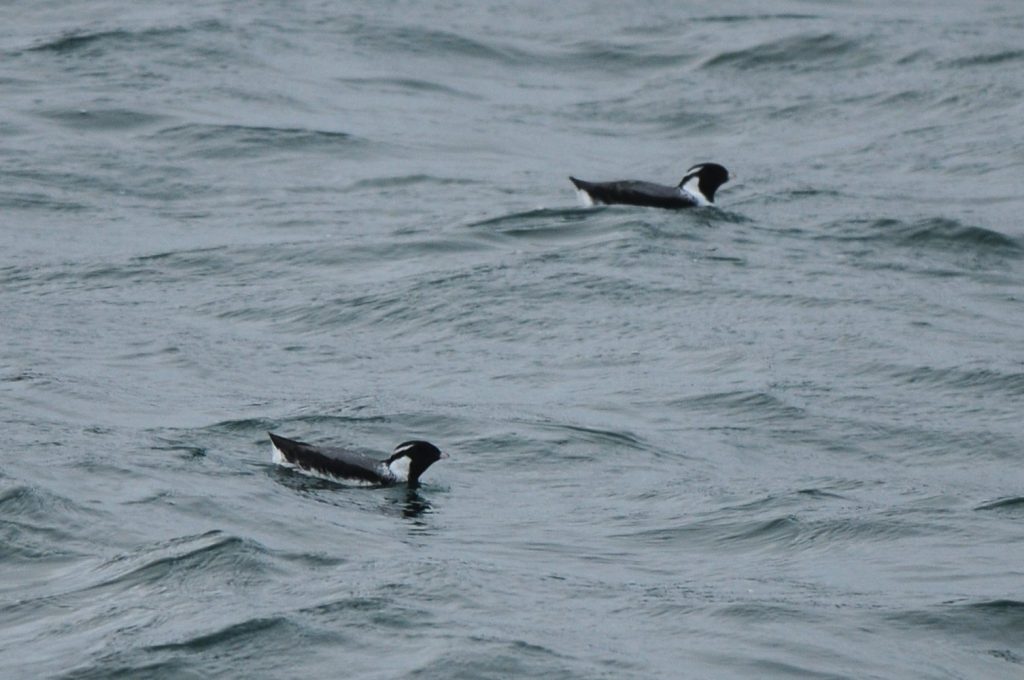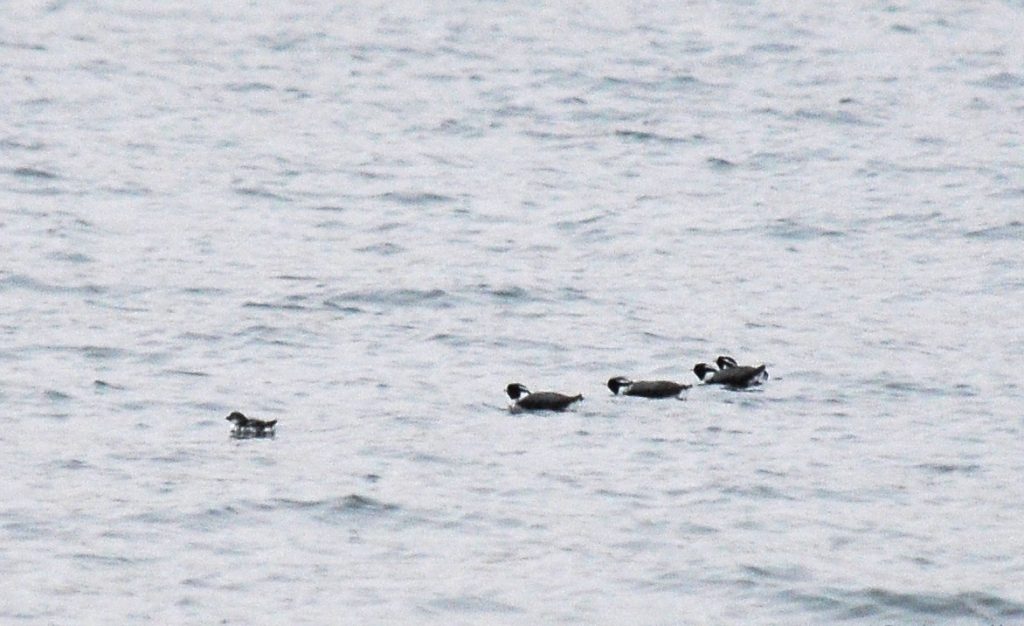This species can be found year-round in the Pribilofs (when open water exists), though it is most reliable in early spring from May to early June. After mid-June this species begins nesting and sightings become much less regular as they are rarely found in near shore waters during daylight hours. By mid-late summer sightings are quite rare (very rare in late July and early August) as this species moves offshore with their newly hatched chicks. Breeding evidence is difficult to gather for this species due to its secretive habits; however, sightings of birds in appropriate breeding habitat, records of adults in nearshore waters with small chicks, and a breeding record from Walrus Island in 1911 suggest this species is an uncommon, perhaps sporadic, breeder in the Pribilofs. Sightings begin to increase once again from late August to mid-September as the breeding cycle ends and birds begin to forage more widely. Birds remain reliable in most years through mid-October, with the largest concentrations noted in late September and early October. This species continues to be found into late fall and early winter in small numbers though their winter abundance is poorly known and likely dependent on winter sea ice.



